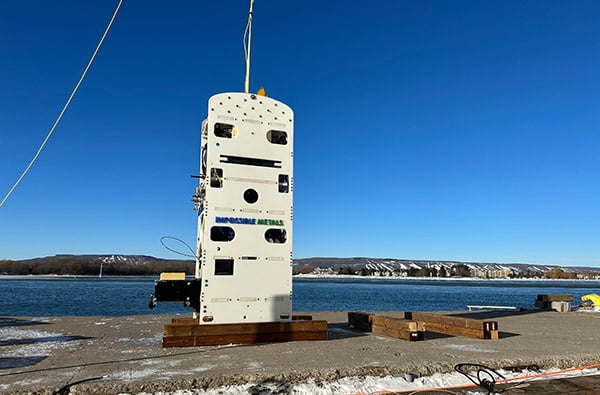Inspenet, July 31, 2023.
This robot could play a crucial role in underwater mining.
Eureka is an innovative autonomous underwater robot developed by Impossible Metals intended for the harvesting of minerals for batteries on the seabed . This solution represents a more ecological and economical alternative compared to the current mining machines used in these tasks.
Damage-free underwater mining: Is it possible?
Because there is such a large amount of material on the ocean floor, opinions are divided on whether removing these items from the deep seafloor is justified, with some seeing it as worthwhile while others say it could cause irreparable damage to the ocean. a living ecosystem. Renee Grogan, co-creator of Impossible Metals, a company focused on sustainable deep-sea mining solutions, sees Eureka as a possible solution to this dilemma.
“We need to be able to make sure that the ecosystem on the seabed remains intact,” Grogan said.
During a test, Eureka was submerged on the Canadian side of Lake Huron. Using its artificial intelligence- powered retractable arm, the robot collected rocks simulating metal nodules from the bottom of the lake.
“The claws themselves are driven by AI and say ‘Take it, leave it, take it,'” Grogan explained.
However, the shallow water prototype represents just the beginning of the journey for the company. His long-term goal is to deploy a fleet of underwater vehicles, each costing approximately $5 million, capable of plunging up to four miles underwater.
Equipped with cameras and floating arms, these robots would collect valuable nodules from the ocean floor without disturbing the sand and without affecting marine organisms.
This high-tech process is designed to minimize environmental impact and is more like grappling than the excavators used in traditional deep-sea mining, which involves dredging the ocean floor with giant robotic shovels.
Such work could soon begin if the International Seabed Authority, established by the United Nations, grants mining permits in the Clarion-Clipperton Zone. This vast area of the Pacific Ocean, which stretches from Hawaii to Mexico and covers about 2 million square miles, is home to valuable mineral deposits. However, using this mining method would essentially suck up the ocean floor and could have devastating consequences for more than 5,000 deep-sea species, destroying their habitats.
The scientific community, including Douglas McCauley, an ocean scientist at the University of California, Santa Barbara, has spoken out against this deep-sea mining practice. They warn that it could crush marine life and generate toxic plumes of sediment that would spread throughout the ocean, severely affecting the fisheries on which humans depend.
“We can’t try to save the planet by breaking it up in the process, right?” McCauley said. “Those several years of mining are going to cause centuries of damage.”
Questioning the possibility of a more precise method, like the one Impossible Metals is developing, McCauley was dubious.
“Doing it tactically, with that kind of precision, is going to be difficult or maybe even impossible,” he said.
Despite the odds, Grogan doesn’t give in to fear. He said his company is “halfway” to a future in which robots are widely used and he expects the technology to be commercially deployed within five years.

